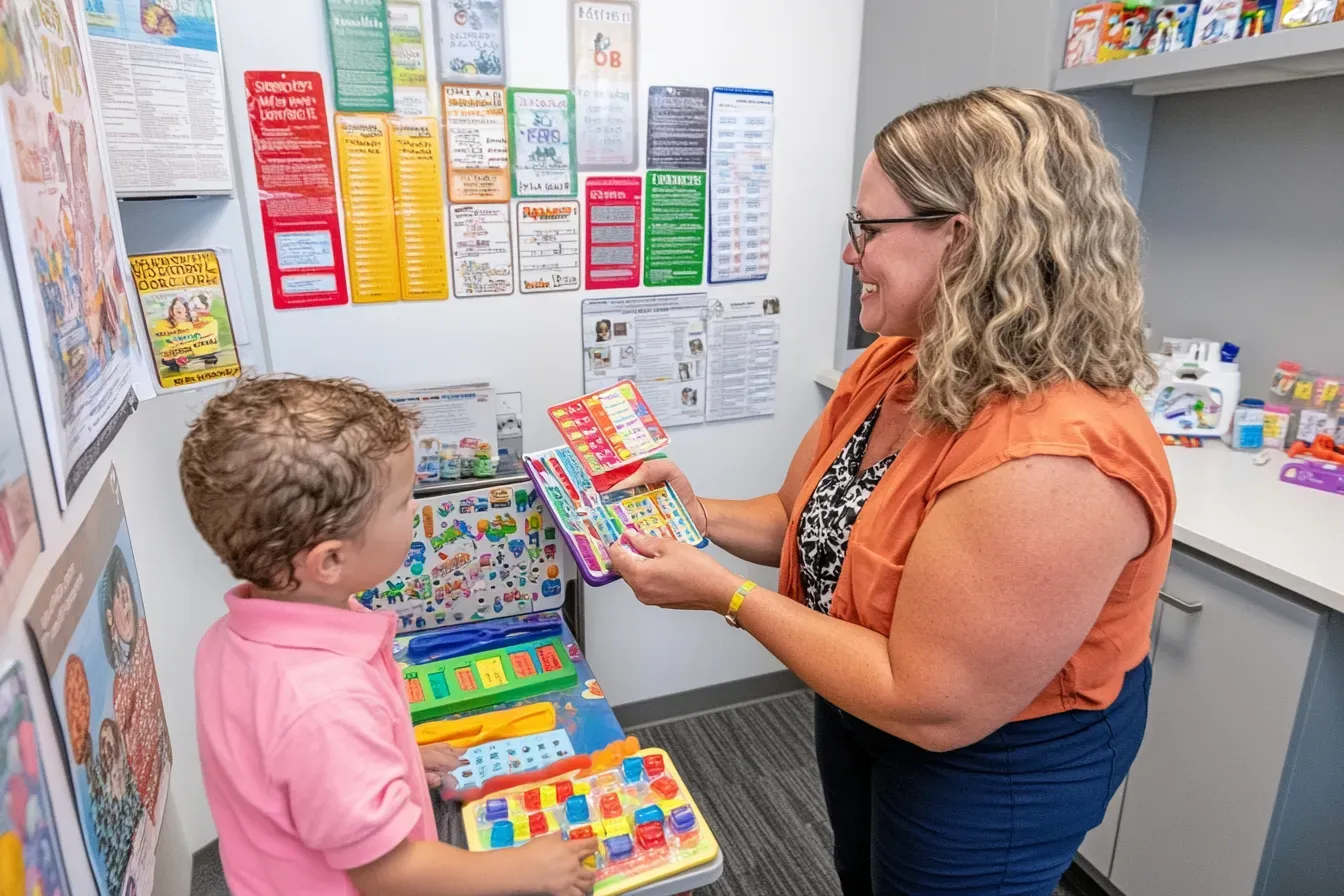Enhancing Student Learning with Technology: Trends and Innovations

We might think that the COVID-19 pandemic forced us all to adapt to online education, but in reality, e-learning has been around for some time in different formats. Online grading and homework tools were our first introduction to digital education, followed by online Zoom classes, and we’re now also witnessing AI tools like virtual reality and augmented reality infiltrate the classrooms.
Welcome to the blog about cutting-edge technological tools and innovations in education. We will provide insights into how these tools enrich teaching methodologies and open new horizons for learners worldwide.
Current Landscape of Technology in Education for 2026
A dynamic integration of advanced tools characterizes today's educational landscape. Institutions are heavily leveraging various technologies to enhance the learning and teaching experience. This includes the widespread use of learning management systems like Moodle, mobile apps for education, and collaborative platforms like Zoom that facilitate remote learning.
Of course, this intense use of technology has been accelerated by the COVID-19 pandemic, when the sudden need for remote learning struck, leading companies to rapidly create new tools or adjust existing ones to fit educational needs.
However, despite the consequences of the pandemic, specific tools have emerged regardless and are continuously being integrated into learning processes. Schools and universities are adopting artificial intelligence (AI) to personalize learning experiences and improve educational outcomes—more on this in the upcoming sections.
Trends in Educational Technology 2026
Several vital technological trends shape the way we approach teaching and learning. Let’s look at the most prominent ones below:
Adaptive Learning Systems
Adaptive learning systems use advanced AI and machine learning (ML) models to promote early AI exposure on kids’ cognitive development. These algorithms gather student performance data, including quiz results, time spent on tasks, and interaction patterns with the learning platform. Then, they use this information to adjust the difficulty, pace, and style of content presented to the student.
Here’s an example. In math, if a student excels at fractions but struggles with decimals, the adaptive learning system will adjust to provide more focused exercises on decimals, using more straightforward problems and gradually increasing the difficulty level or more interactive content to aid understanding.
As the system gathers more data, it becomes more accurate at forecasting the types of resources and learning strategies that will be most effective for each student.
Various educational institutions are increasingly adopting adaptive learning systems. The University of North Carolina at Charlotte (UNC Charlotte) and Colorado Technical University (CTU) are among the schools that have successfully implemented adaptive learning systems to tackle high failure rates in foundational courses and enhance student engagement.
Virtual Reality and Augmented Reality in Education
Virtual reality (VR) and augmented reality (AR) offer immersive and interactive learning experiences beyond traditional classroom boundaries in education. These technologies allow students to engage in 3D environments, making learning more engaging and memorable.
VR is increasingly used to stimulate real-world scenarios or explore historical events up close. For instance, students can take virtual field trips to ancient Egypt or experience life in a rainforest ecosystem with the help of special VR headsets and controllers, all from their classroom. This makes complex topics more accessible and tangible, fostering a deeper understanding of the subject.
AR, on the other hand, overlays digital information in the real world, enhancing the learning experience without creating an entirely artificial environment. For instance, students can use AR to bring complex diagrams like molecular structures to life and engage in interactive textbook elements, providing a deeper understanding of chemical compounds and reactions.
The immersive nature of VR and AR helps deliver highly engaging experiences to students, which results in better information retention. Stanford University and Cleveland Clinic have employed these tactics for several years in their classrooms.
Artificial Intelligence in Education
AI-powered tools continue revolutionizing how educational content is personalized, delivered, and accessed. From K-12 to higher education, here is how AI technologies integrate across various educational techniques, enhancing both the learning and teaching experience:
- Personalized Learning: AI algorithms analyze student interactions and performance data to tailor educational experiences to individual needs. This involves adjusting the difficulty level of assignments, providing personalized feedback, or suggesting resources that target specific weaknesses.
- Automation of Administrative Tasks: AI helps automate routine tasks such as grading, attendance, and scheduling. This saves time for teachers and increases accuracy and efficiency, allowing them to focus more on teaching and less on administrative tasks.
- Intelligent Tutoring Systems: These systems utilize AI to stimulate one-on-one human tutoring experiences. They provide immediate feedback, guide students through complex problems, and adapt their instructional approach based on the student’s responses.
- Content Generation: AI can also aid in content creation, generating educational material and assessments based on specific guidelines, thereby supporting educators in curriculum development.
These AI-powered tools have been shown to engage students in novel ways, making learning more interactive and adaptable to their learning pace and style. For instance, AI models can make subjects like financial literacy for kids more accessible to children aged below 12. On the other hand, it assists educators with valuable insights to refine teaching strategies, predict student outcomes, and identify at-risk students early on.
Gamification and Game-Based Learning
Gamification is an innovative educational approach integrating game elements and principles into learning environments to enhance student engagement and academic outcomes. Gamification learning involves applying game mechanics, such as points, badges, and leaderboards, to non-game contexts like education to motivate learners. Kahoot! and Quizlet are great examples, as they offer competitive quizzes and study tools like flashcards and time-matching games.
Conversely, game-based learning uses actual games as a medium to deliver pacific learning objectives, allowing students to learn through gameplay in a structured and purposeful manner. An example of game-based learning is Minecraft: Education Edition. This version of the popular game is specifically designed for classroom use, where students build projects and simulations that teach subjects like history, science, and math.
These methods have been proven to increase motivation and make learning more enjoyable. By presenting educational content through interactive challenges and rewarding progress, students are more likely to develop a deeper interest in the subject matter and retain the information better.
Innovations Transforming Classroom Dynamics
Technology is ushering in a new era of dynamic learning and classroom experiences. Innovations like mobile learning, cloud computing, and the Internet of Things are redefining the traditional classroom, making education more accessible, collaborative, and inclusive. Let’s examine these innovations in more detail.
Mobile Learning
Mobile learning, or m-learning, uses the power of smartphones, tablets, and other gadgets to extend educational opportunities. This approach allows students to access learning materials anytime and anywhere, making it more flexible and personalized.
These are usually apps developed by the university or school, where students have personal accounts. They can record their attendance, view deadlines, and submit assignments. Moreover, mobile learning supports real-time feedback and collaboration, enabling students to interact with their peers and instructors seamlessly, thus fostering a more collaborative learning environment.
Cloud Computing and Collaborative Tools
Cloud computing and collaborative tools are revolutionizing the educational landscape by enabling a shared, accessible environment where teachers and students can interact and access resources in real time. This technology works by hosting software, data storage, and processing power on remote servers that users can access over the Internet.
These tools offer several advantages to the learning process. For instance, students can collaborate on projects through platforms like Microsoft Teams or Google Workspace, sharing documents and collaborating in real-time, enhancing teamwork and problem-solving skills. Cloud-based applications can automatically save and sync work across all devices, ensuring no academic work is lost and that students pick up where they left off, whether in the classroom or at home.
Internet of Things (IoT) in Education
The Internet of Things (IoT) integrates intelligent, connected devices into the learning environment. In schools, IoT applications range from smartboards that interact with student devices to sensors that adjust lighting and temperature, creating an optimal learning atmosphere.
For example, IoT devices can track attendance automatically as students enter the classroom. At the same time, wearable technology can monitor student health and engagement levels, providing teachers with real-time data to adjust their teaching strategies. Moreover, IoT-powered science experiments can automatically record and analyze data, allowing students to focus more on hypothesis and analysis than data collection.
How can schools promote digital equity and accessibility in technology-enhanced learning?
Educational institutions must adopt structured strategies to ensure that digital learning environments serve every student effectively. Implementing universal design principles, integrating assistive technologies, and offering tailored training for educators are essential steps. Additionally, addressing infrastructure gaps by providing necessary devices and reliable internet connectivity fosters an inclusive learning experience. Professionals seeking to refine these strategies can consider pursuing easy certifications that pay well, which focus on both technological proficiency and inclusive educational practices.
How can professional certifications drive effective technology adoption in education?
Educational professionals can leverage advanced certifications to lead the integration of emerging technologies within educational environments. By pursuing targeted professional qualifications—such as online graduate certificates—educators and administrators equip themselves with skills that enhance decision-making, strategic planning, and the effective evaluation of new digital tools. These certifications serve as industry benchmarks, reinforcing expertise and fostering a culture of continuous improvement in technology adoption while aligning institutional practices with cutting-edge trends.
How can educational technologies pave the way to high-demand vocational careers?
Educational technologies now play a crucial role in aligning academic programs with the skill sets required in hands-on professions. By leveraging simulation tools, virtual labs, and competency-based learning platforms, institutions can merge theoretical instruction with practical experience. Such an approach equips learners with the technical proficiency demanded in specialized fields, thereby enhancing their career readiness for positions in high-demand markets, including trades that pay well. This integration of digital tools with vocational training not only bridges the gap between classroom learning and industry expectations but also supports continuous professional development in emerging technical careers.
Case Studies and Examples
With all these tools conquering classrooms, let’s examine some specific examples of tools and case studies of learning with technology.
Classcraft
Classcraft is an innovative platform that transforms traditional classroom dynamics into a game-like experience. Here’s how it works: teachers enter and set up a game-like environment where students create avatars, earn points for academic achievements and positive behavior, and lose points for negative actions. The system integrates with the curriculum, allowing educators to create quests and challenges that align with learning objectives.
Classcraft makes learning fun and engaging for students by turning coursework into interactive games. It promotes soft skills like teamwork, leadership, and communication, as students must often work together to complete in-game activities. The classroom also offers teachers real-time student performance and behavior feedback, enabling more tailored educational support.
Knewton
Knewton Alta, currently owned by Wiley, is a platform that leverages AI to personalize educational content for students. It creates a responsive environment that adjusts in real-time. It analyzes student interactions, including quiz answers and time spent on specific topics, and tailors the instructional content to each student’s learning style and pace.
Knewton helps teachers identify individual and class-wide knowledge gaps and tailor their content. The primary benefit to students is the ability to offer customized learning paths. This is particularly beneficial in classrooms where students' abilities and learning speeds are diverse.
More than 14 million students at various schools and universities use Newton in their curriculum. The platform's analytics have helped various educational institutions refine their course syllabuses and teaching methods based on data-driven insights.
Canva
Canva is a graphic design platform that has become an inseparable tool in educational settings, from K-12 classrooms to university courses. Its intuitive drag-and-drop interface and AI-powered tools allow teachers and students to create presentations and other course content.
Canvas AI capabilities significantly enhance the user experience by automating and optimizing various design tasks. For instance, the “Magic Resize” tool uses AI to adapt a single design into multiple formats suitable for presentations, posters, or social media posts. Another AI feature, the “Design Suggestion” tool, recommends templates based on the input of the content users.
Additionally, Canva supports collaborative projects, letting students and teachers work together both in classrooms and remotely. This feature is handy in post-pandemic hybrid and sometimes fully online learning environments, promoting cooperation and easing the sharing of ideas and feedback.
Curipod
Curipod is another innovative educational platform that seamlessly integrates AI into traditional classroom learning experiences to make them more interactive. Designed with educators in mind, Curipod allows teachers to craft engaging lesson plans that incorporate dynamic elements such as quizzes, polls, and word clouds.
At its core, Curipod is built to enhance the educational journey by making it more interactive and adaptable. Educators can use the platform to tailor lessons to the unique needs of their students, employing AI to analyze the response and adapt the content in real-time. This ensures that the material is relevant and delivered to maximize understanding and retention.
Many schools and universities find Curipod especially useful for its ability to foster an environment of creativity and critical thinking. By moving away from passive learning, the platform encourages students to engage deeply with the material, participate actively in discussions, and collaborate with peers.
Thinglink
The last one on our list is Thinglink – a tool that empowers teachers and students to create interactive images, videos, and 360-degree virtual environments. Its robust platform lets users augment visual content with informational tags, links, videos, and audio files, transforming static media into engaging learning experiences.
For instance, a geography teacher might use Thinglink to create an interactive map of Europe, where students can click on different countries to learn about their cultures, histories, and economies through embedded videos and articles. Another example is when art teachers use it to create interactive 360 digital tools of famous artworks.
Thinglink is a favorite of many institutions because of its versatility, from elementary classrooms to university lecture halls. Teachers use this platform to make complex content more interactive, with supplementary information and external resources directly within the image or video. For students, the platform’s intuitive design and accessibility ensure that everyone, regardless of their tech proficiency, can benefit from its features.
How can institutions secure sensitive data and privacy in digital classrooms?
Educational institutions must implement robust cybersecurity measures to safeguard sensitive information and protect digital learning environments. Adopting encryption protocols, regular risk assessments, and secure authentication practices are key strategies to mitigate cyber threats. Institutions should also invest in staff training for data privacy protocols and consider engaging with certified experts to audit technology infrastructures. For those seeking advanced expertise in cyber-focused educational strategies, exploring the fastest masters degree can provide a strong foundation in addressing these challenges.
How can students and educators address the challenges of technology integration in learning?
While technology offers incredible advancements in education, it also brings certain challenges that students and educators must navigate for effective learning. Recognizing and addressing these challenges can ensure a smoother integration of technology in educational environments, promoting a balanced approach to digital learning. Here are some key challenges and strategies to overcome them:
- Digital Equity and Access:
- Challenge: Not all students have access to the necessary devices, stable internet connections, or supportive learning environments for technology-based education.
- Solution: Schools can offer loaner devices, create technology lending programs, or secure funding for low-income students to access technology. Community partnerships can also help expand access to resources.
- Technical Proficiency and Training:
- Challenge: Both students and educators may face a steep learning curve when adapting to new technology. Without proper training, technology may become a hindrance rather than a tool.
- Solution: Schools and universities should provide comprehensive training for students and faculty to familiarize them with digital platforms. Offering workshops, online resources, and ongoing support can foster confidence and competency in using educational technology.
- Balancing Screen Time and Offline Learning:
- Challenge: Extended screen time can lead to digital fatigue and negatively impact focus and health, especially with prolonged online learning.
- Solution: Encourage a balanced approach by integrating offline activities and hands-on learning alongside digital tasks. Teachers can assign offline assignments, group discussions, or physical activities to reduce screen dependency.
- Privacy and Data Security:
- Challenge: With the increased use of AI and cloud-based platforms, data privacy concerns arise, as student information is often stored digitally.
- Solution: Educators and institutions should adopt secure, privacy-compliant platforms and regularly review their data protection policies. Students and staff should be educated on best practices for online privacy and cybersecurity to ensure personal data remains protected.
- Student Engagement in Digital Learning:
- Challenge: Digital tools may sometimes lack the interactivity needed to maintain student engagement, leading to decreased motivation.
- Solution: Incorporate interactive elements like quizzes, polls, and virtual discussions to keep students engaged. Gamification and multimedia content can also enhance student interest and involvement in digital lessons.
How can educators assess the effectiveness of digital learning tools?
Evaluating digital learning tools requires clear metrics that reflect both student performance and engagement. Institutions can begin by establishing key performance indicators, such as improvements in test scores, user engagement statistics, and the rate of skill acquisition. Educators should also employ qualitative methods like surveys and focus groups to gather in-depth feedback on user experiences. Data analytics integrated within these platforms can offer real-time insights that help refine tool deployment and instructional practices. Additionally, academic research bolstering these evaluation strategies is available through programs such as 1-year PhD programs online no dissertation USA, which explore innovative ways to measure and enhance the impact of digital education.
How can educators enhance their digital competencies through continuous professional development?
Educational professionals must pursue ongoing training to remain adept at integrating emerging technologies into the classroom and to foster an environment of innovative teaching. Structured programs, targeted workshops, and industry-recognized certifications enable educators to update their technical skills, adapt pedagogical strategies, and effectively troubleshoot digital classroom challenges without delaying instructional priorities. Short-term, intensive learning opportunities, such as degrees that take less than a year, offer a practical approach for busy professionals seeking to navigate evolving digital landscapes while maintaining high standards in education.
How can institutions leverage external expertise for strategic digital transformation?
Institutions can benefit from engaging specialized experts to streamline the transition toward digital learning environments. By collaborating with external professionals, institutions gain access to tailored strategies, risk mitigation frameworks, and data-driven decision-making processes that complement internal efforts. These experts offer targeted guidance on designing robust digital infrastructures, ensuring compliance with cybersecurity standards, and establishing effective change management practices, all of which are crucial for sustaining long-term success. For instance, insights from experienced partners, such as college admission consultants, can inform strategic planning and recruitment approaches, ultimately enhancing the overall educational experience.
Future Trends and Predictions
In the next few decades, rapid technological advancements will profoundly shape education. Key trends forecast a more dominant role for “the next Internet,” driven by 6G communications, which will seamlessly merge physical and digital interactions. This will stimulate more immersive educational experiences that could safely and cost-effectively mimic complex real-world scenarios.
Another significant trend will focus on early AI exposure for kids’ cognitive development. Research shows that introducing AI tools in early education can improve learning outcomes by providing customized educational experiences that adapt to individual learning styles. Early exposure to AI-powered tools can help develop critical thinking, problem-solving, and adaptability among children.
The role of generative AI will grow to offer tools tailored to educational materials. This technology facilitates the creation of dynamic learning paths that adapt based on student performance, potentially increasing understanding and retention. Such systems can generate realistic and diverse scenarios for simulation-based learning, which can be helpful in complex fields like medical and technical education.
In addition, AI and learning analytics will continue to redefine traditional educational frameworks. The academic sector will rely more heavily on “datafication” of learning processes, which refers to using large-scale data to transform systems and practices. However, this comes with ethical considerations concerning data privacy, which must be adapted to current protocols to ensure they’re not jeopardized.
Sum Up
Integrating technology into student learning is boundless, and the future looks even more promising for students and educators. Technologies from adaptive learning systems to cloud computing enrich and enhance the educational journey, preparing students for a future where learning is more engaging and accessible. Keep an eye on these developments as we witness the digital revolution continue.


































